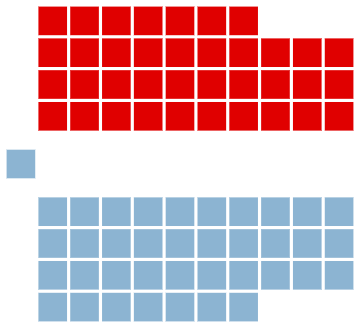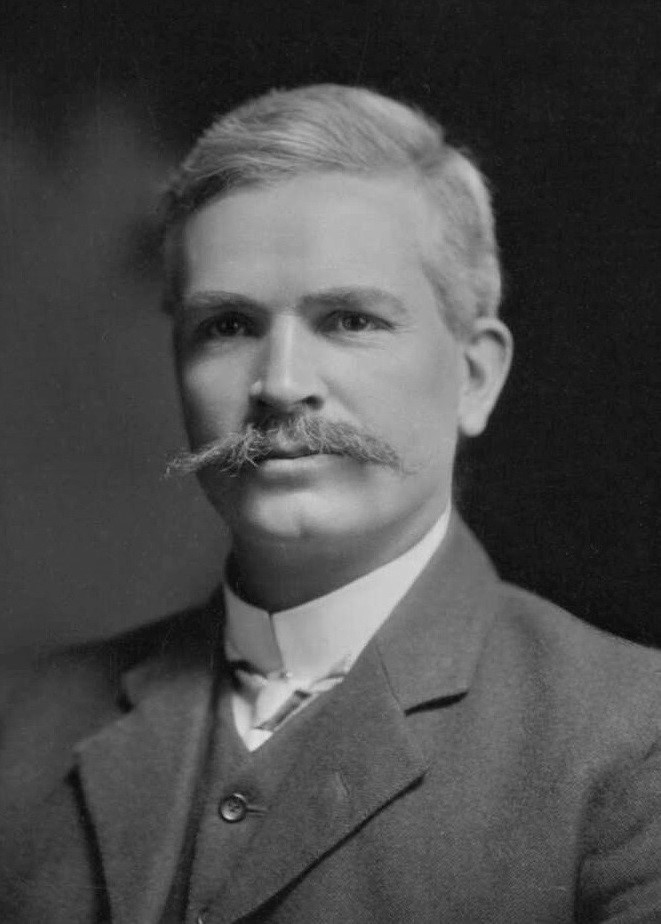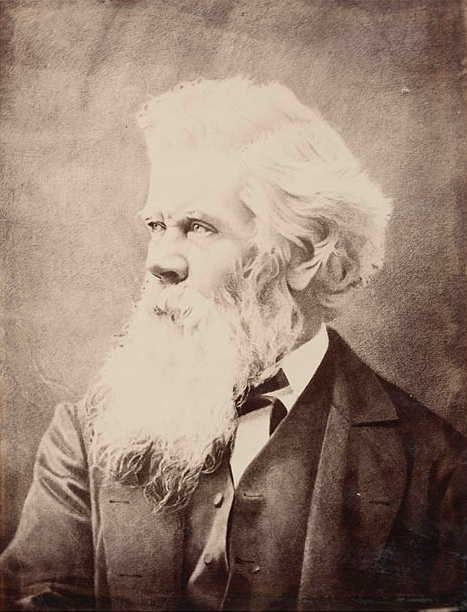|
List Of Senators From Queensland
This is a list of senators from the state of Queensland since Australian Federation The Federation of Australia was the process by which the six separate British self-governing colonies of Queensland, New South Wales, Victoria, Tasmania, South Australia (which also governed what is now the Northern Territory), and Western A ... in 1901. List {{Australian Senate Delegations * Senators, Queensland ... [...More Info...] [...Related Items...] OR: [Wikipedia] [Google] [Baidu] |
Australian Senate
The Senate is the upper house of the Bicameralism, bicameral Parliament of Australia, the lower house being the House of Representatives (Australia), House of Representatives. The composition and powers of the Senate are established in Chapter I of the Constitution of Australia. There are a total of 76 senators: 12 are elected from each of the six states and territories of Australia, Australian states regardless of population and 2 from each of the two autonomous internal states and territories of Australia, Australian territories (the Australian Capital Territory and the Northern Territory). Senators are popularly elected under the single transferable vote system of proportional representation. Unlike upper houses in other Westminster system, Westminster-style parliamentary systems, the Senate is vested with significant powers, including the capacity to reject all bills, including budget and appropriation bills, initiated by the government in the House of Representatives, maki ... [...More Info...] [...Related Items...] OR: [Wikipedia] [Google] [Baidu] |
Thomas Givens
Henry Thomas Givens (12 June 1864 – 19 June 1928) was an Australian politician. He served as a Senator for Queensland from 1904 until his death in 1928 and was President of the Senate from 1913 to 1926. He began his career in the Australian Labor Party (ALP), serving briefly in the Queensland Legislative Assembly (1899–1902), but became a Nationalist after the party split of 1916. He was born in Ireland and worked as a labourer, miner, trade unionist and newspaper editor before entering politics. Early life Givens was born on 12 June 1864 in Cappagh White, County Tipperary, Ireland. He was the son of Mary Ann (née White) and Robert Givens, a farmer. He was educated in Ireland at a Catholic primary school, although he was a Protestant. According to one account, he was associated with the Irish National Land League and was gaoled for a period. Givens emigrated to Australia in 1882, landing at Maryborough, Queensland. He initially worked on the canefields of North Queen ... [...More Info...] [...Related Items...] OR: [Wikipedia] [Google] [Baidu] |
1913 Australian Federal Election
The 1913 Australian federal election was held in Australia on 31 May 1913. All 75 seats in the House of Representatives, and 18 of the 36 seats in the Senate were up for election. The incumbent Labor Party, led by Prime Minister Andrew Fisher, was defeated by the opposition Commonwealth Liberal Party under Joseph Cook. The new government had a majority of just a single seat, and held a minority of seats in the Senate. It would last only 15 months, suffering defeat at the 1914 election. The 1913 election was held in conjunction with six referendum questions, none of which were carried. According to David Day, Andrew Fisher's biographer, "it was probably the timing of the referenda that was most responsible for the disappointing election result" for the Labor Party. Results House of Representatives ---- ;Notes * Three members were elected unopposed – one Liberal and two Labor. Senate Seats changing hands * Members listed in italics did not contest their seat at t ... [...More Info...] [...Related Items...] OR: [Wikipedia] [Google] [Baidu] |
Members Of The Australian Senate, 1913–1914
This is a list of members of the Australian Senate from 1913 to 1914. Half of its members were elected at the 13 April 1910 election and had terms starting on 1 July 1910 and finishing on 30 June 1916; the other half were elected at the 31 May 1913 election and had terms starting on 1 July 1913 and finishing on 30 June 1919. In fact their terms were terminated prematurely with the calling of the 5 September 1914 election as a double dissolution A double dissolution is a procedure permitted under the Australian Constitution to resolve deadlocks in the bicameral Parliament of Australia between the House of Representatives (lower house) and the Senate (upper house). A double dissolution .... Notes References * * {{DEFAULTSORT:Members of the Australian Senate, 1913-1914 Members of Australian parliaments by term 20th-century Australian politicians Australian Senate lists ... [...More Info...] [...Related Items...] OR: [Wikipedia] [Google] [Baidu] |
1910 Australian Federal Election
The 1910 Australian federal election was held in Australia on 13 April 1910. All 75 seats in the House of Representatives, and 18 of the 36 seats in the Senate were up for election. The incumbent Commonwealth Liberal Party (the result of a merger between the Protectionist Party and the Anti-Socialist Party) led by Prime Minister Alfred Deakin was defeated by the opposition Labour Party, led by Andrew Fisher. The election represented a number of landmarks: it was Australia's first elected federal majority government; Australia's first elected Senate majority; the world's first Labour party majority government at a national level; after the 1904 Chris Watson minority and Fisher's former minority government the world's third Labour party government at a national level; the first time it controlled ''both'' houses of a bicameral legislature; and the first time that a prime minister, in this case Deakin, was defeated at an election. It also remains the only election in Australia's ... [...More Info...] [...Related Items...] OR: [Wikipedia] [Google] [Baidu] |
Members Of The Australian Senate, 1910–1913
This is a list of members of the Australian Senate from 1910 to 1913. Half of its members were elected at the 12 December 1906 election and had terms starting on 1 January 1907 and finishing on 30 June 1913—they had an extended term as a result of the 1906 referendum, which changed Senate terms to finish on 30 December, rather than 30 June—the other half were elected at the 13 April 1910 election and had terms starting on 1 July 1910 and finishing on 30 June 1916. Parties reflect those acknowledged at the time of the 1910 election. Notes References * * {{DEFAULTSORT:Members Of The Australian Senate, 1910-1913 Members of Australian parliaments by term 20th-century Australian politicians Australian Senate lists ... [...More Info...] [...Related Items...] OR: [Wikipedia] [Google] [Baidu] |
Thomas Chataway
Thomas Drinkwater Chataway (6 April 1864 – 5 March 1925) was an English-born Australian politician. Born in Wartling, Sussex, he was educated at Charterhouse School before migrating to Australia in 1881, where he became a grazier and sugar mill-owner in New South Wales and then Queensland. He was a leader among Queensland cane growers, sitting on Mackay Council and serving as mayor in 1904. In 1906 he was elected to the Australian Senate as an Anti-Socialist Senator for Queensland. He joined the Commonwealth Liberal Party when it formed in 1909. Chataway was defeated in 1913, after which he became a journalist in Melbourne. He died on at his home in Toorak, Victoria Toorak () is a suburb of Melbourne, Victoria, Australia, south-east of Melbourne's Central Business District, located within the City of Stonnington local government area, on Boonwurrung Land. Toorak recorded a population of 12,817 at the 2021 .... References Free Trade Party members of the Parlia ... [...More Info...] [...Related Items...] OR: [Wikipedia] [Google] [Baidu] |
Robert Sayers
Robert John Sayers (27 January 1845 – 12 May 1919) was an English-born Australian politician. Born at Cowes, on the Isle of Wight, he was educated in England before migrating to Australia in 1863. He was a goldminer in New South Wales and then Queensland, and became a mine owner in Charters Towers. Sayers was elected in 1888 to the Legislative Assembly of Queensland as the member for Charters Towers, serving until 1893. In 1906, he was elected to the Australian Senate as an Anti-Socialist Senator for Queensland, joining the Commonwealth Liberal Party in 1909. He was defeated in 1913. Sayers died in 1919, aged 74, and was buried in Brisbane's Toowong Cemetery Toowong Cemetery is a heritage-listed cemetery on the corner of Frederick Street and Mt Coot-tha Road, Toowong, City of Brisbane, Queensland, Australia. It was established in 1866 and formally opened in 1875. It is Queensland's largest cemet .... [...More Info...] [...Related Items...] OR: [Wikipedia] [Google] [Baidu] |
Commonwealth Liberal Party
The Liberal Party was a parliamentary party in Australian federal politics between 1909 and 1917. The party was founded under Alfred Deakin's leadership as a merger of the Protectionist Party and Anti-Socialist Party, an event known as the Fusion. The creation of the party marked the emergence of a two-party system, replacing the unstable multi-party system that arose after Federation in 1901. The first three federal elections produced hung parliaments, with the Protectionists, Free Traders, and Australian Labor Party (ALP) forming a series of minority governments. Free Trade leader George Reid envisioned an anti-socialist alliance of liberals and conservatives, rebranding his party accordingly, and his views were eventually adopted by his Protectionist counterpart Deakin. Objections towards Reid saw Deakin take the lead in coordinating the merger. The Fusion was controversial, with some of his radical supporters regarding it as a betrayal and choosing to sit as independents ... [...More Info...] [...Related Items...] OR: [Wikipedia] [Google] [Baidu] |
Anti-Socialist Party
The Free Trade Party which was officially known as the Australian Free Trade and Liberal Association, also referred to as the Revenue Tariff Party in some states, was an Australian political party, formally organised in 1887 in New South Wales, in time for the 1887 colony election, which the party won. It advocated the abolition of protectionism, especially protective tariffs and other restrictions on trade, arguing that this would create greater prosperity for all. However, many members also advocated use of minimal tariffs for government revenue purposes only. Its most prominent leader was George Reid, who led the Reid Government as the fourth Prime Minister of Australia (1904–05). In New South Wales it was succeeded by the Liberal and Reform Association in 1902, and federally by the Anti-Socialist Party in 1906. In 1909, the Anti-Socialist Party merged with the Protectionist Party to form the Commonwealth Liberal Party. History The party was centred on New South Wales, ... [...More Info...] [...Related Items...] OR: [Wikipedia] [Google] [Baidu] |
Anthony St Ledger
Anthony James Joseph St Ledger (18 February 1859 – 17 April 1929) was an English-born Australian politician. Born in Barnsley, England, he migrated to Australia as a child and was educated at St Killan College in Ipswich, Queensland. He became a teacher with the Queensland Education Department, but studied law, eventually becoming a barrister. In 1906, he was elected to the Australian Senate as an Anti-Socialist Senator for Queensland, joining the Commonwealth Liberal Party when the Anti-Socialists were absorbed in 1909. His book "Australian Socialism: An Historical Sketch of its Origins and Developments" was published in 1909. He remained in the Senate until his defeat in 1913. Leaving politics, he moved to Melbourne Melbourne ( ; Boonwurrung/Woiwurrung: ''Narrm'' or ''Naarm'') is the capital and most populous city of the Australian state of Victoria, and the second-most populous city in both Australia and Oceania. Its name generally refers to a met ... to cont ... [...More Info...] [...Related Items...] OR: [Wikipedia] [Google] [Baidu] |
1906 Australian Federal Election
The 1906 Australian federal election was held in Australia on 12 December 1906. All 75 seats in the House of Representatives, and 18 of the 36 seats in the Senate were up for election. The incumbent Protectionist Party minority government led by Prime Minister Alfred Deakin retained government, despite winning the fewest House of Representatives votes and seats of the three parties. Parliamentary support was provided by the Labour Party led by Chris Watson, while the Anti-Socialist Party (renamed from the Free Trade Party), led by George Reid, remained in opposition. Watson resigned as Labour leader in October 1907 and was replaced by Andrew Fisher. The Protectionist minority government fell in November 1908 to Labour, and a few days later Reid resigned as Anti-Socialist leader, being replaced by Joseph Cook. The Labour minority government fell in June 1909 to the newly formed Commonwealth Liberal Party led by Deakin; this Party was formed on a shared anti-Labour platform as a ... [...More Info...] [...Related Items...] OR: [Wikipedia] [Google] [Baidu] |




